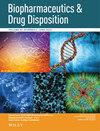血浆对乙酰氨基酚葡萄糖醛酸/对乙酰氨基酚浓度比降低提示对乙酰氨基酚诱导的肝损伤的发生
IF 2
4区 医学
Q3 PHARMACOLOGY & PHARMACY
引用次数: 2
摘要
对乙酰氨基酚(APAP)诱导的肝损伤(AILI)是急性肝衰竭最常见的原因。虽然触发AILI的机制是众所周知的,但如何阻止AILI的进展并促进肝脏恢复却鲜为人知。因此,有必要了解APAP患者肝毒性的病理生理学,并研究预测/预防标志物。在一项临床研究中,我们报告了一例APAP葡萄糖醛酸浓度(AP‐G)/APAP血浆浓度较低的患者,其谷草转氨酶(AST)和丙氨酸转氨酶(ALT)水平升高。然后进行了一项反向翻译研究,以澄清这一临床问题。通过体内和体外实验研究血浆AP‐G/APAP浓度比与AST和ALT水平的关系。在体内实验中,与5周龄大鼠相比,10周龄大鼠表现出较低的UGT活性,较低的AP - G/APAP浓度比,以及较高的AST和ALT水平。这表明APAP处理大鼠的AP - G/APAP浓度比与AST、ALT水平呈负相关。此外,通过体外实验证实,随着培养基中AP - G/APAP浓度比的降低,细胞活力降低。由于血浆AP - G/APAP浓度比值的下降早于AST和ALT水平的升高,该比值可能是AILI的症状前标志。当APAP长期使用时,建议进行治疗药物监测AP‐G/APAP浓度比,这是预测/预防AILI的指标。本文章由计算机程序翻译,如有差异,请以英文原文为准。
Decreased plasma acetaminophen glucuronide/acetaminophen concentration ratio warns the onset of acetaminophen‐induced liver injury
Acetaminophen (APAP)‐induced liver injury (AILI) is the most common cause of acute liver failure. Although the mechanisms that trigger AILI are well known, it is less understood how to halt AILI progression and facilitate liver recovery. Therefore, it is necessary to understand the pathophysiology of APAP hepatotoxicity in patients and to examine predictive/preventive markers. In a clinical study, we had a case in which aspartate aminotransferase (AST) and alanine aminotransferase (ALT) levels increased in a patient with a low ratio of APAP glucuronide concentration (AP‐G)/APAP plasma concentration. Then a reverse translational study was conducted for clarifying this clinical question. The relationship between plasma AP‐G/APAP concentration ratio and the levels of AST and ALT was examined by in vivo and in vitro experiments. In in vivo experiments, 10‐week‐old rats showed lower UGT activity, lower AP‐G/APAP concentration ratios, and higher AST and ALT levels than 5‐week‐old rats. This suggests an inverse correlation between the AP‐G/APAP concentration ratio and the AST, ALT levels in APAP‐treated rats. Furthermore, as a result of the in vitro experiment, it was confirmed that the cell viability decreased when the AP‐G/APAP concentration ratio in the culture medium decreased. Since the decrease in the plasma AP‐G/APAP concentration ratio appears earlier than the increase of AST and ALT levels, the ratio might be a presymptomatic marker of AILI. When APAP is used for a long time, it is recommended to perform therapeutic drug monitoring of the AP‐G/APAP concentration ratio, which is a predictive/preventive marker of AILI.
求助全文
通过发布文献求助,成功后即可免费获取论文全文。
去求助
来源期刊
CiteScore
3.60
自引率
0.00%
发文量
35
审稿时长
6-12 weeks
期刊介绍:
Biopharmaceutics & Drug Dispositionpublishes original review articles, short communications, and reports in biopharmaceutics, drug disposition, pharmacokinetics and pharmacodynamics, especially those that have a direct relation to the drug discovery/development and the therapeutic use of drugs. These includes:
- animal and human pharmacological studies that focus on therapeutic response. pharmacodynamics, and toxicity related to plasma and tissue concentrations of drugs and their metabolites,
- in vitro and in vivo drug absorption, distribution, metabolism, transport, and excretion studies that facilitate investigations related to the use of drugs in man
- studies on membrane transport and enzymes, including their regulation and the impact of pharmacogenomics on drug absorption and disposition,
- simulation and modeling in drug discovery and development
- theoretical treatises
- includes themed issues and reviews
and exclude manuscripts on
- bioavailability studies reporting only on simple PK parameters such as Cmax, tmax and t1/2 without mechanistic interpretation
- analytical methods

 求助内容:
求助内容: 应助结果提醒方式:
应助结果提醒方式:


